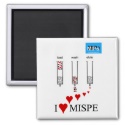|
|
Reference type: Book Chapter
Authors: Zhao L, Ping H, Xiang L, Han P, Wang JH, Pan LG
Publication date: 2011
Chapter title: Application of Molecular Imprinting Technique in Organophosphorus Pesticides Detection.
Page numbers: 290-295.
DOI: 10.1007/978-3-642-18333-1_34
Book title: Computer and Computing Technologies in Agriculture IV
Editors: Li DL, Liu YD, Chen YY
Publisher: Springer
City: Boston
ISBN: ISBN 978-3-642-18332-4 e-ISBN 978-3-642-18333-1
Series title: IFIP Advances in Information and Communication Technology
Volume number: 344
Abstract: Molecular imprinting technique offers a means of producing practical materials that are able to recognize a certain molecule in terms of shape, size and chemical functionality. In order to obtain a highly selective recognition of organophosphorus pesticides (OPPs), we synthesized molecularly imprinted polymers (MIPs) using pirimiphos-methyl as the template, methacrylic acid as the monomer and ethylene glycol dimethacrylate as the crosslinker. After polymerization, molecularly imprinted solid-phase extraction (MISPE) was used for the selective preconcentration of OPPs. The preparation methods and synthesis conditions of MIPs were discussed, and the specificity of MIPs and nonimprinted polymers were investigated. The results showed that MIPs enable the selective extraction of pirimiphos-methyl successfully from water sample, and demonstrated the potential of MISPE for selective and cost-effective sample pretreatment
Template and target information: pirimiphos-methyl
Author keywords: Molecularly imprinted polymers, solid phase extraction, organophosphorus pesticides
|


 MI cryptic logo mug
MI cryptic logo mug







 multi MIPs logo mousemat
multi MIPs logo mousemat







 I love MISPE magnet
I love MISPE magnet






